Price:89,00€ 69,00€
Tour of Rome & Vatican
Description
Rome, capital of Italy, is considered one of the most beautiful cities in the world. Its historic center, together with the extraterritorial properties of the Holy See inside the city and the Basilica of St. Paul Outside the Walls, is among the 54 Italian sites included by UNESCO. One of the legends about the origins of Rome is that it tells that the Trojans, under the guidance of Aeneas, escaped from their city rasa to the ground and came to Lazio where they settled and integrated with the Latin populations from which the Roman stock descended. The date of the foundation of Rome is, by custom, set at 753 BC, based on the testimony of the historian Varrone, although other sources report indications of different dates. The historic center, enclosed within the Aurelian walls (on the left of the Tiber) and the gianicolensi walls (on the right of the river), includes 25,000 points of environmental and archaeological interest. The territory within the perimeter of the Aurelian walls is divided into 22 districts: Monti, Trevi; Colonna, Campo Marzio, Ponte, Parione, Regola, Sant’Eustachio, Pigna, Campitelli, Sant’Angelo, Ripa, Trastevere, Borgo, Esquilino, Ludovisi, Sallustiano, Castro Pretorio, Celio, Testaccio, San Saba, Prati.
| DEPARTURE/RETURN LOCATION | Hotel, Apartment, Cruise Ship, Airport Terminal | ||||
| DEPARTURE TIME | Can be tailored as you wish we suggest anyway 8:00am from the cruise port | ||||
| INCLUDED |
|
||||
| NOT INCLUDED |
|
Usually we meet our clients at their address or hotel,and we try together them to figure it out what they really want to see.Every private tour is a different situation,sometime they already have been to Rome,or maybe they had other private tour of Rome,so we try to give them what they need to visit. Rome is an amazing city,and for sure you can’t see deeply all the beauties that it offers in few hours,but with our private tour is possible enjoy the highlights of Rome and know the most important information that a professional driver guide is going to tell you.
Itinerary
What is the trip about
Coming from the port of Civitavecchia,if our private tour is a shore excursion,we will start our tour with a stop at one of the most incredible site of Rome the Gianicolo.The Janiculum is one of the best locations in Rome for a scenic view of central Rome with its domes and bell towers. Other sights on the Janiculum include the church of San Pietro in Montorio, on what was formerly thought to be the site of St Peter’s crucifixion; a small shrine known as the Tempietto, designed by Donato Bramante, marks the supposed site of Peter’s death. The Janiculum also houses a Baroque fountain built by Pope Paul V in the late 17th century, the Fontana dell’Acqua Paola, and several foreign research institutions, including the American Academy in Rome and the Spanish Academy in Rome. The Hill is also the location of The American University of Rome, Pontifical Urban University, and Pontifical North American College, as well as the Orto Botanico dell’Università di Roma “La Sapienza” and the Palazzo Montorio, residence of the Ambassadors of Spain.
Leaving the Janiculum we will cross the Tiber river and the first stop will be in the oldest archeological area where Rome was founded in 753 B.C. Rome has its origins on the Palatine. Indeed, recent excavations show that people have lived there since approximately 1000 BC. According to Livy, after the immigration of the Sabines and the Albans to Rome, the original Romans lived on the Palatine. Many affluent Romans of the Republican period (c.509 BC – 44 BC) had their residences there. During the Empire (27 BC – 476 AD) several emperors resided there; in fact, the ruins of the palaces of Augustus (27 BC – 14 AD), Tiberius (14 – 37 AD) and Domitian (81 – 96 AD) can still be seen. Augustus also built a temple to Apollo here, beside his own palace. The Palatine Hill was also the site of the festival of the Lupercalia.The Circus Maximus (Latin for greatest or largest circus, in Italian Circo Massimo) is an ancient Roman chariot racing stadium and mass entertainment venue located in Rome, Italy. Situated in the valley between the Aventine and Palatine hills, it was the first and largest stadium in ancient Rome and its later Empire. It measured 621 m (2,037 ft) in length and 118 m (387 ft) in width, and could accommodate over 150,000 spectators. In its fully developed form, it became the model for circuses throughout the Roman Empire. The site is now a public park.
With its closeness to the Palatine the next sight will be the famous Colosseum one of the most visited monument of the world. The Colosseum or Coliseum, also known as the Flavian Amphitheatrum,is an oval amphitheatre in the centre of the city of Rome, Italy. Built of concrete and stone, it is the largest amphitheatre ever built and is considered one of the greatest works of architecture and engineering. The Colosseum is situated just east of the Roman Forum. Construction began under the emperor Vespasian in 72 AD, and was completed in 80 AD under his successor and heir Titus. Further modifications were made during the reign of Domitian (81–96). These three emperors are known as the Flavian dynasty, and the amphitheatre was named in Latin for its association with their family name (Flavius). The Colosseum could hold, it is estimated, between 50,000 and 80,000 spectators, having an average audience of some 65,000; it was used for gladiatorial contests and public spectacles such as mock sea battles, animal hunts, executions, re-enactments of famous battles, and dramas based on Classical mythology. The building ceased to be used for entertainment in the early medieval era. It was later reused for such purposes as housing, workshops, quarters for a religious order, a fortress, a quarry, and a Christian shrine. The Roman Forum (Latin: Forum Romanum, Italian: Foro Romano) is a rectangular forum (plaza) surrounded by the ruins of several important ancient government buildings at the center of the city of Rome. Citizens of the ancient city referred to this space, originally a marketplace, as the Forum Magnum, or simply the Forum. It was for centuries the center of Roman public life: the site of triumphal processions and elections; the venue for public speeches, criminal trials, and gladiatorial matches; and the nucleus of commercial affairs. Here statues and monuments commemorated the city’s great men. The teeming heart of ancient Rome, it has been called the most celebrated meeting place in the world, and in all history. Located in the small valley between the Palatine and Capitoline Hills, the Forum today is a sprawling ruin of architectural fragments and intermittent archaeological excavations attracting 4.5 million sightseers yearly.
After the ancient Roman side of the city our tour change definitely,a quick stop to the square that can be considered the center of Rome. Piazza Venezia is the central hub of Rome, Italy, in which several thoroughfares intersect, including the Via dei Fori Imperiali and the Via del Corso. It takes its name from the Palazzo Venezia, built by the Venetian Cardinal, Pietro Barbo (later Pope Paul II) alongside the church of Saint Mark, the patron saint of Venice. The Palazzo Venezia served as the embassy of the Republic of Venice in Rome. One side of the Piazza is the site of Italy’s Tomb of the Unknown Soldier in the Altare della Patria, part of the imposing Monument to Vittorio Emanuele II, first king of Italy (nicknamed Wedding’s Cake).The piazza or square is at the foot of the Capitoline Hill and next to Trajan’s Forum. The main artery, the Viale di Fori Imperiali begins there and leads past the Roman Forum to the Colosseum.
Our tour continue through the old narrow streets of Rome and in few minutes we’ll reach an amazing sight. The Pantheon(from Greek meaning “every god”) is a building in Rome, Italy, on the site of an earlier building commissioned by Marcus Agrippa during the reign of Augustus (27 BC – 14 AD). The present building was completed by the emperor Hadrian and probably dedicated about 126 AD. He retained Agrippa’s original inscription, which has confused its date of construction. The building is circular with a portico of large granite Corinthian columns (eight in the first rank and two groups of four behind) under a pediment. A rectangular vestibule links the porch to the rotunda, which is under a coffered concrete dome, with a central opening (oculus) to the sky. Almost two thousand years after it was built, the Pantheon’s dome is still the world’s largest unreinforced concrete dome. The height to the oculus and the diameter of the interior circle are the same, 43.3 metres (142 ft). It is one of the best-preserved of all Ancient Roman buildings. It has been in continuous use throughout its history, and since the 7th century, the Pantheon has been used as a church dedicated to “St. Mary and the Martyrs” but informally known as “Santa Maria Rotonda”. The square in front of the Pantheon is called Piazza della Rotonda.
After the suggestion of the Pantheon fews blocks and we will be astonished by the beauty of the pearl of the Baroque.Defined as a public space in the last years of 15th century, when the city market was transferred there from the Campidoglio, the Piazza Navona was transformed into a highly significant example of Baroque Roman architecture and art during the pontificate of Innocent X, who reigned from 1644 until 1655, and whose family palace, the Palazzo Pamphili, faced the piazza. It features important sculptural and architectural creations: in the center stands the famous Fontana dei Quattro Fiumi or Fountain of the Four Rivers (1651) by Gian Lorenzo Bernini, topped by the Obelisk of Domitian, brought in pieces from the Circus of Maxentius; the church of Sant’Agnese in Agone by Francesco Borromini, Girolamo Rainaldi, Carlo Rainaldi and others; and the aforementioned Pamphili palace, also by Girolamo Rainaldi, that accommodates the long gallery designed by Borromini and frescoed by Pietro da Cortona. Piazza Navona has two other fountains. At the southern end is the Fontana del Moro with a basin and four Tritons sculpted by Giacomo della Porta (1575) to which, in 1673, Bernini added a statue of a Moor, or African, wrestling with a dolphin. At the northern end is the Fountain of Neptune (1574) also created by Giacomo della Porta; the statue of Neptune by Antonio Della Bitta, was added in 1878 to create a balance with La Fontana del Moro.
One of the most famous site of the Eternal City will be the next stop.The Trevi Fountain is a fountain in the Trevi district in Rome, Italy, designed by Italian architect Nicola Salvi and completed by Pietro Bracci. Standing 26.3 metres (86 ft) high and 49.15 metres (161.3 ft) wide, it is the largest Baroque fountain in the city and one of the most famous fountains in the world. The fountain has appeared in several notable films, including Federico Fellini’s La Dolce Vita.Legend holds that in 19 BC thirsty Roman soldiers were guided by a young girl to a source of pure water thirteen kilometers from the city of Rome. The discovery of the source led Augustus to commission the construction of a twenty-two kilometer aqueduct leading into the city, which was named Aqua Virgo, or Virgin Waters, in honor of the legendary young girl. The aqueduct served the hot Baths of Agrippa, and Rome, for over four hundred years.Coins are purportedly meant to be thrown using the right hand over the left shoulder. This was the theme of 1954’s Three Coins in the Fountain and the Academy Award-winning song by that name which introduced the picture. An estimated 3,000 Euros are thrown in to the fountain each day. The money has been used to subsidize a supermarket for Rome’s needy; however, there are regular attempts to steal coins from the fountain.
Almost at the end of our private Rome tour we’ll find another spectacoular piazzas of Rome.At the bottom of the Spanish Steps, is one of the most famous squares in Rome. It owes its name to the Palazzo di Spagna, seat of the Embassy of Spain among the Holy See.In the middle of the square is the famous Fontana della Barcaccia, dating to the beginning of the baroque period, sculpted by Pietro Bernini and his son, the more famous Gian Lorenzo Bernini. The imposing 135-step staircase was inaugurated by Pope Benedict XIII during the 1725 Jubilee; it was released (thanks to French loans granted in 1721–1725) in order to connect the Bourbon Spanish embassy (from which the square takes its name) to the Church of Trinità dei Monti.It was designed by Alessandro Specchi and Francesco De Sanctis after generations of long and glowing discussions about how to urbanize the steep slope on the side of the Pincian Hill in order to connect it to the church. The sumptuous, aristocratic staircase, at the summit of a straight sequence of streets leading down to the Tiber, was designed so that the scenic effects increase more and morewhile approaching to it. In effect, the creation of long, deep perspectives culminating in monumental wings or backdrops was typical of the great baroque architecture.
Now it’s the time to take a break for a bite in a local restaurant or a slice of pizza to get new energy and be ready for the last part of our amazing private tour. By Catholic tradition, the Basilica is the burial site of its namesake St. Peter, one of the Apostles of Jesus Christ and, also according to tradition, the first Pope and Bishop of Rome. Tradition and strong historical evidence hold that St. Peter’s tomb is directly below the high altar of the Basilica. For this reason, many Popes have been interred at St. Peter’s since the Early Christian period. There has been a church on this site since the time of the Roman Emperor Constantine the Great. Construction of the present basilica, replacing the Old St. Peter’s Basilica of the 4th century AD, began on 18 April 1506 and was completed on 18 November 1626.St. Peter’s is famous as a place of pilgrimage, for its liturgical functions. Because of its location in the Vatican, the Pope presides at a number of liturgies throughout the year, drawing audiences of 15,000 to over 80,000 people, either within the Basilicaor its adjoining St. Peter’s Square. Designed principally by Donato Bramante, Michelangelo, Carlo Maderno and Gian Lorenzo Bernini, St. Peter’s is the most renowned work of Renaissance architecture and remains one of the two largest churches in the world.The Vatican Museum are the museums of the Vatican City and are located within the city’s boundaries. They display works from the immense collection built up by the Popes throughout the centuries including some of the most renowned classical sculptures and most important masterpieces of Renaissance art in the world. Pope Julius II founded the museums in the early 16th century. The Sistine Chapel with its ceiling decorated by Michelangelo and the Stanze della Segnatura decorated by Raphael are on the visitor route through the Vatican Museums. In 2013, they were visited by 5.5 million people which combined makes it the 5th most visited art museum in the world. There are 54 galleries, or salas, in total, with the Sistine Chapel, notably, being the very last sala within the Museum.

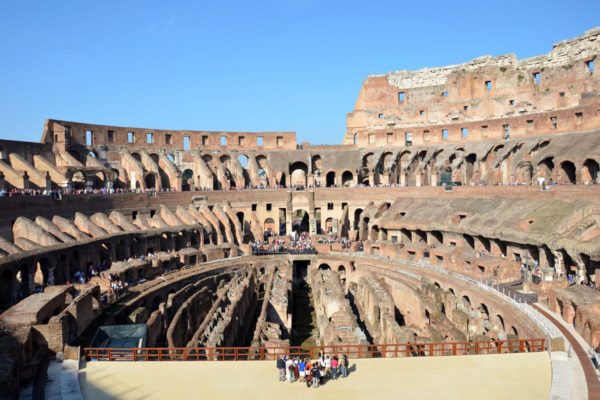
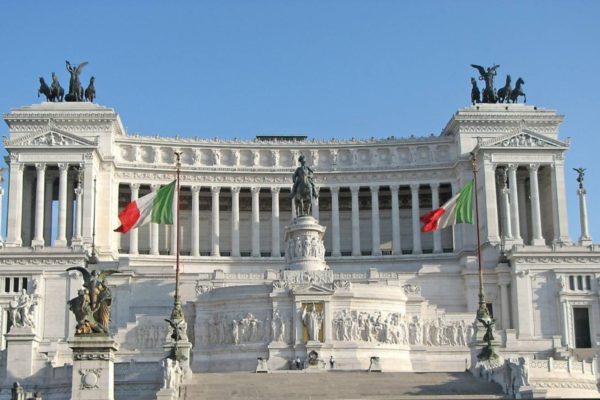
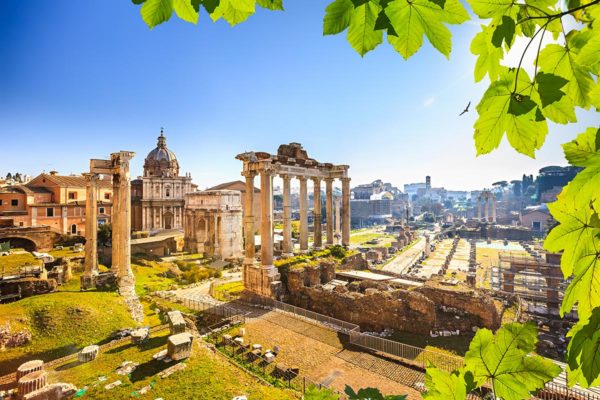
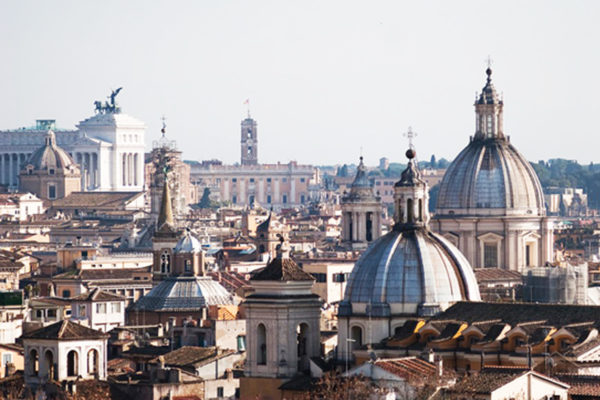
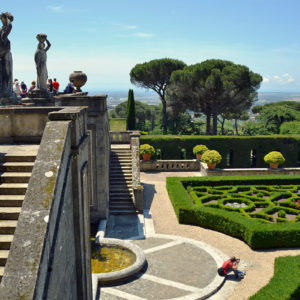
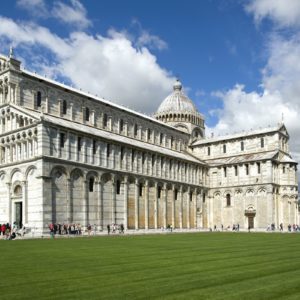
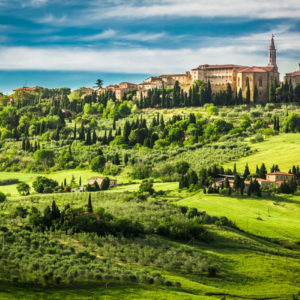
Frank & Judi Tidikis –
We had an excellent tour of Rome with Mr. Maurizio Nataloni. He met us at the dock at 8 a.m. and managed to cover all the major sites during the day. We avoided the long lines at the Coliseum and the Vatican Museum. Maurizio’s knowledge of the history and his sense of humor contributed to a wonderful day. Frank & Judi Tidikis, Stuart, Florida
Deb & Ken Murry –
We just returned from our cruise and wanted to make sure that if you want the best tour of Rome or Naples (along the Amalfi coast) then you need to hire Maurizio Nataloni at touringinrome.com. Maurizio met us on both of our excursions at the port (as we were on a cruise) and made sure we saw all of the hightlights of Rome on our first tour. We had requested a “special tour” of Naples to include Capri, Sorrento and the Amalfi coast where he ensured we had our boat tickets for both Capri and from Capri to Sorrento where he met us and provided a beautiful and scenic tour of the Amalfi coast! He was very flexible to our schedule and sudden changes and ensured we were back to our cruise ship in plenty of time. We had a wonderful experience in Rome and Naples with our memories to cherish due to Maurizio! You can’t go wrong in hiring him! Deb & Ken Murry